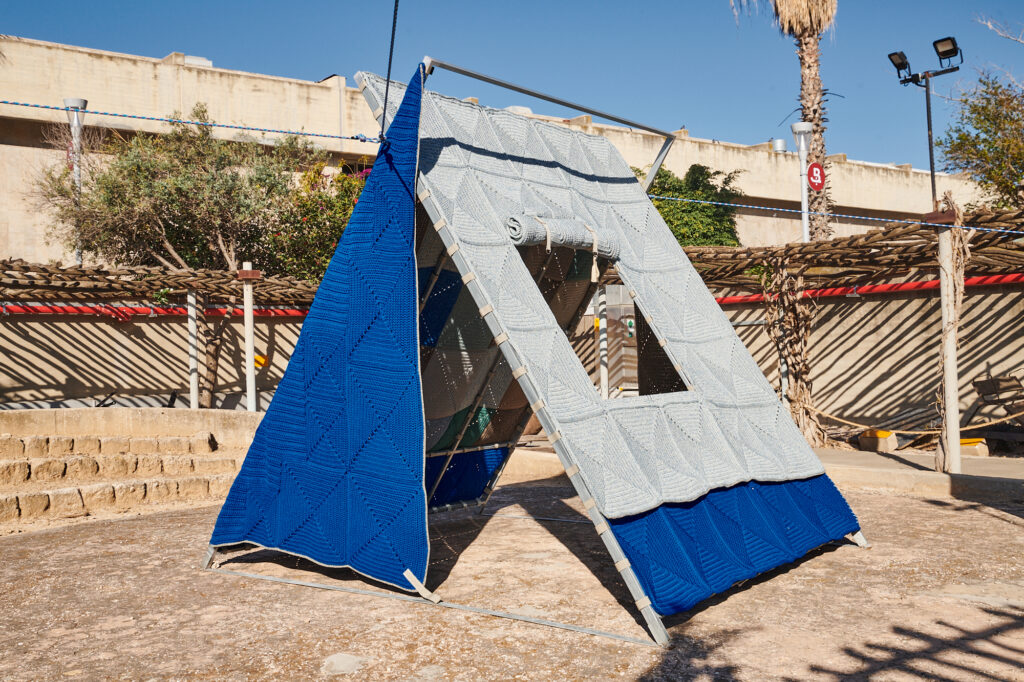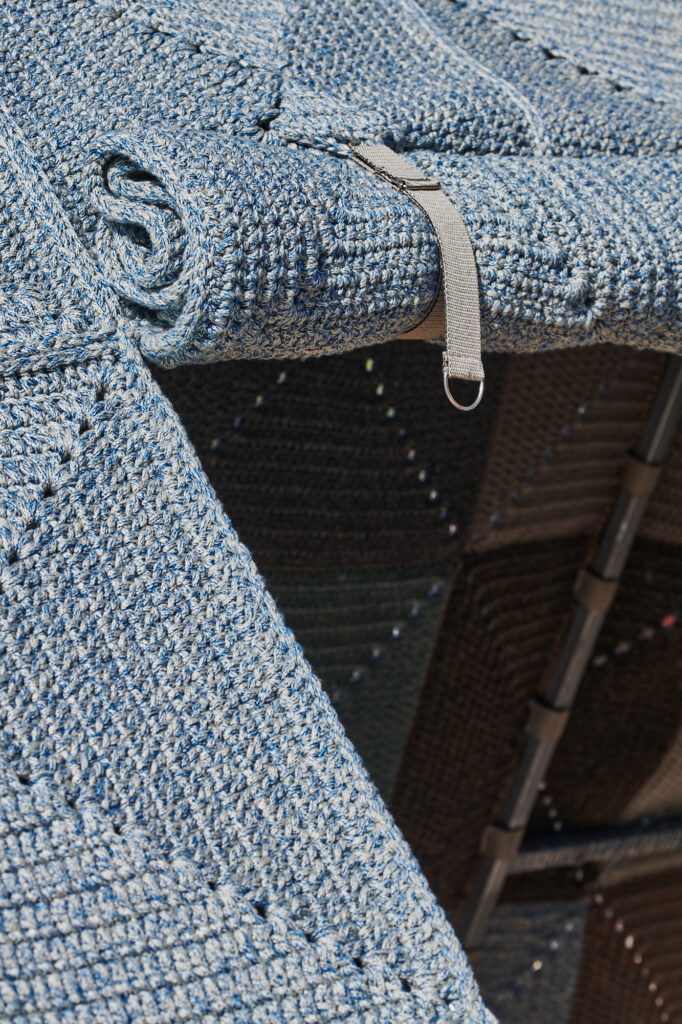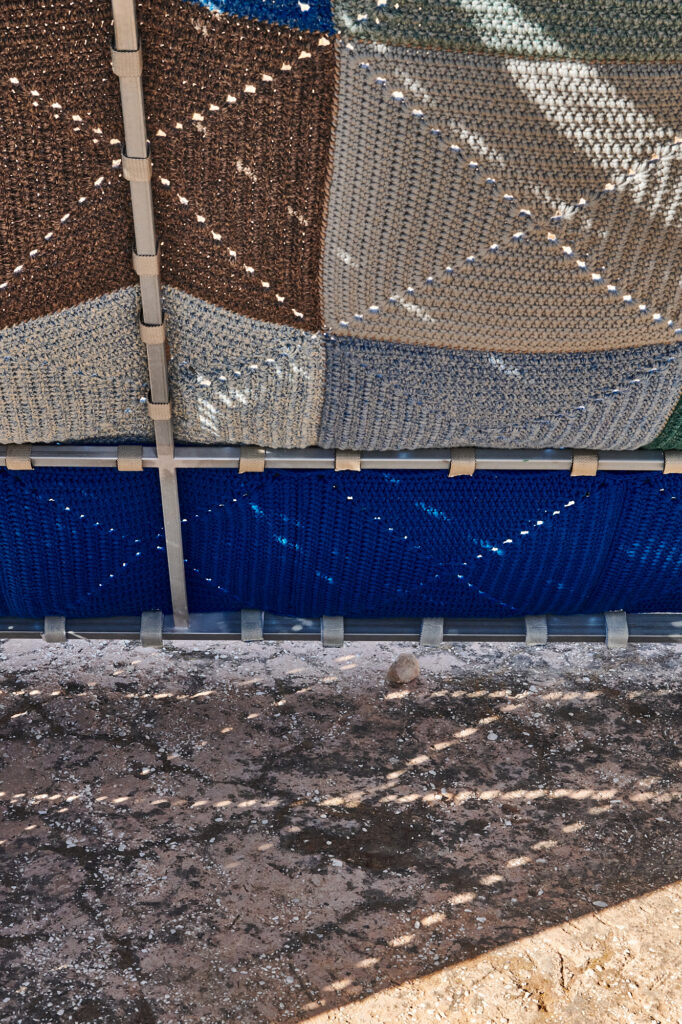Tel Aviv Art and Design Biennale 2023
We are proud to participate in the Tel Aviv Art and Design Biennale 2023, and invite you not to miss a wonderful exhibition that asks the question of “What is the measure of man?” And focuses on the state of humanity at the dawn of a new era.
The Biennale extends over most of the exhibition spaces of the museum. We chose to display our exhibit in the outdoor space, a site-specific tent which is located in the center of the threshing floor also known as the ‘Bread Courtyard’, near the Adam and Amlo Center.

Our exhibit, a hand crocheted inhabit, refers to a tent as a constructive object, a temporary structure supported by pegs and poles. It also considers its value as a shelter, a home, a place to dwell, a hiding place.
The tent is placed in the center of the threshing floor. The threshing floor of biblical times was a vast area near the city. Apart from its agricultural use, it was used for gatherings such as conducting trials and religious ceremonies. In the first colonies and kibbutzim, the threshing floor was a meeting place. Sitting on the threshing floor was used for social gathering, conversation and singing.

The geometry chosen is of a scout tent, a simple and familiar military structure. These two are anchored in the local culture and were the starting points for our exhibit. The tent showcased is built by a straightforward iron construction and hand-knitted textile surfaces which are placed on top and around it.
The tent is built from a module of granny squares. The granny square, whose aesthetic roots lay far from here, is the most familiar element of the craft of Crochet. Granny squares are like building blocks. They can be knitted in any size and be made into surfaces of different scales. Throughout history, the granny squares were knitted from leftover yarns and often knitted on the road and were therefore considered a nomadic characteristic.
The intersecting of textile and metal construction creates a tension between the perception of the tent as a nomadic, fast built structure, and its walls, which take a long time to produce. Their meeting point raises the question of what turns a house into a home. Beyond defining a place, is it the manufacturer’s fingerprint? Is it the fact it will wear off over time? Or the fact that it can grow and define additional areas as part of it?

The granny squares are reminiscent in their appearance of a Mashrabiya. They produce a two-dimensional surface, perforated to a variable extent.
Mashrabiya is a common element of Middle Eastern architecture and was developed in order to create a distinction between an inside of a house and the exterior, and the spaces that are in between. The surfaces are knitted from a unique textile developed by the brand and suitable in its properties for outdoor conditions. The use of this textile, protected from the sun, refers to the regional weather, and like the mashrabiya creates an intermediate space between interior and exterior. Between total exposure and full protection, a zone of vulnerability.

The nostalgia for the present, described in the theme of the biennale, is linked to the importance we attribute to the preservation of handicrafts. We believe in the need and ability of man to stand on his own authority, to create for himself the space for his existence.
The ability to knit a shelter for ourselves is a strength, and the knitting process, which takes time, is a meditative and healing process. The very act of knitting creates a safe space in the mind, without necessarily being directly related to the object which is crafted.
The women we provide work for, mostly Syrian refugees, who managed to escape and live today in Istanbul, know and experience the nomadic experience. In our daily work, we enable them to work for a fair wage on a regular basis and hope that they will make their place of residence personal, safe and permanent.




